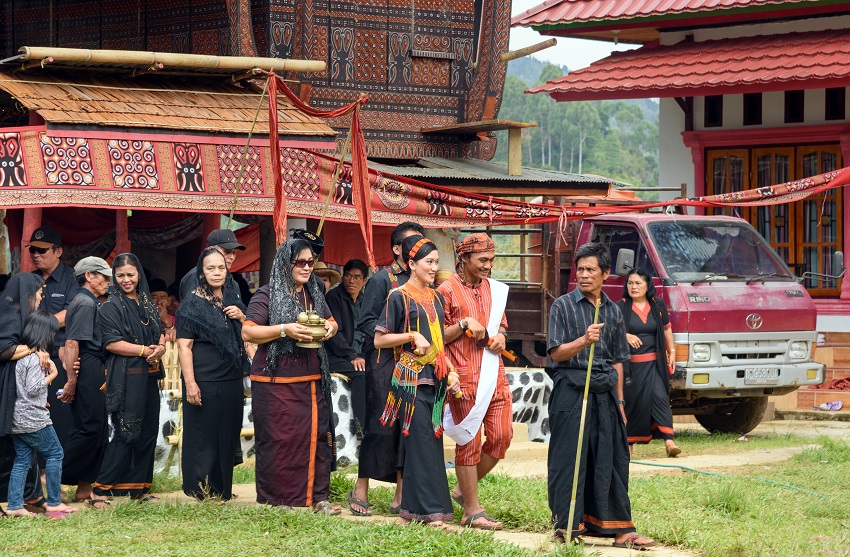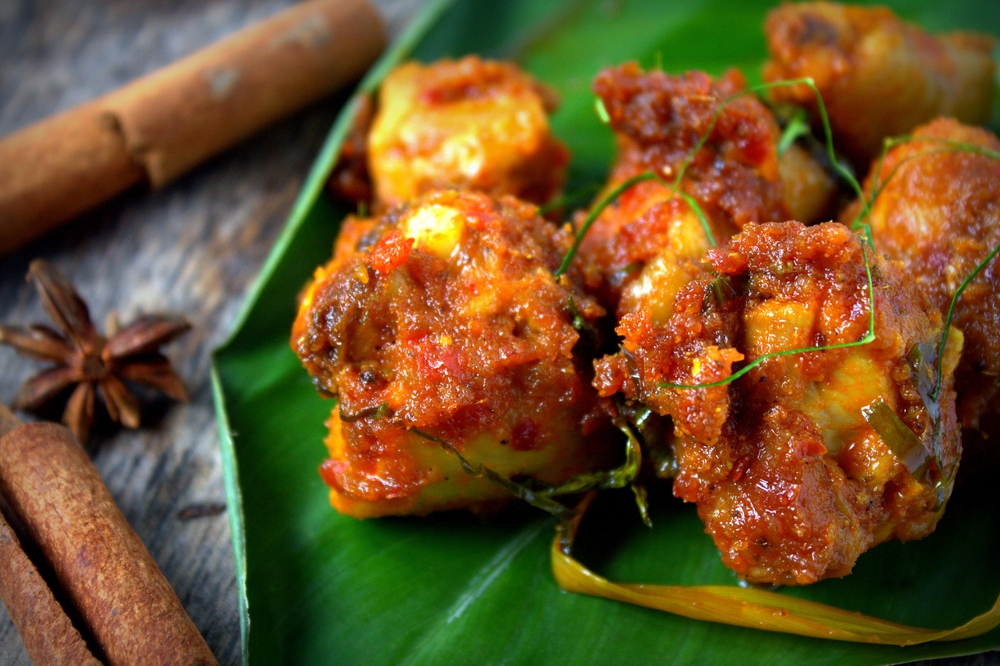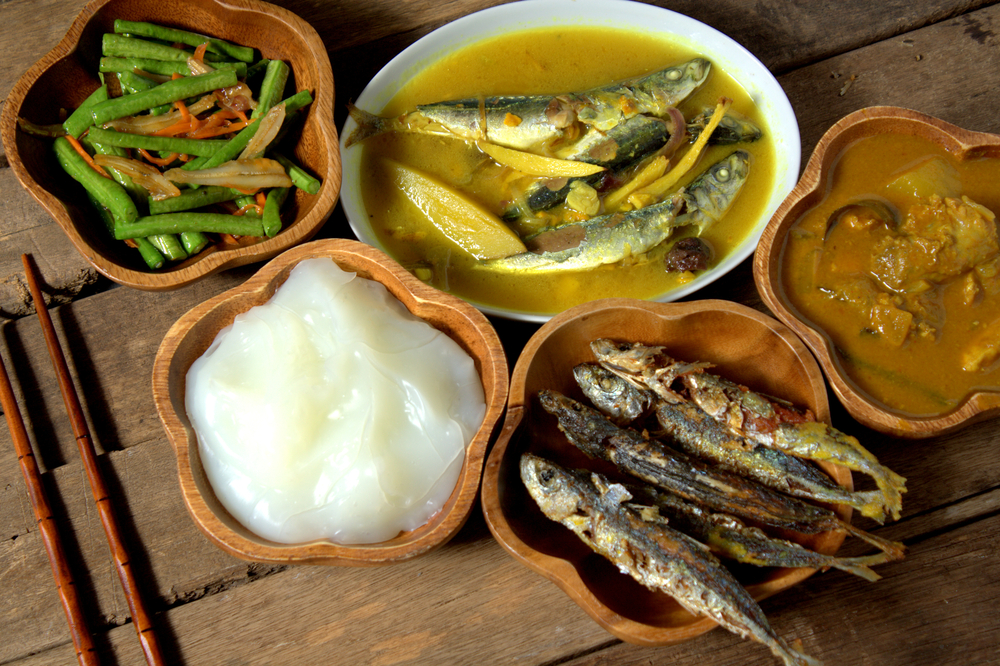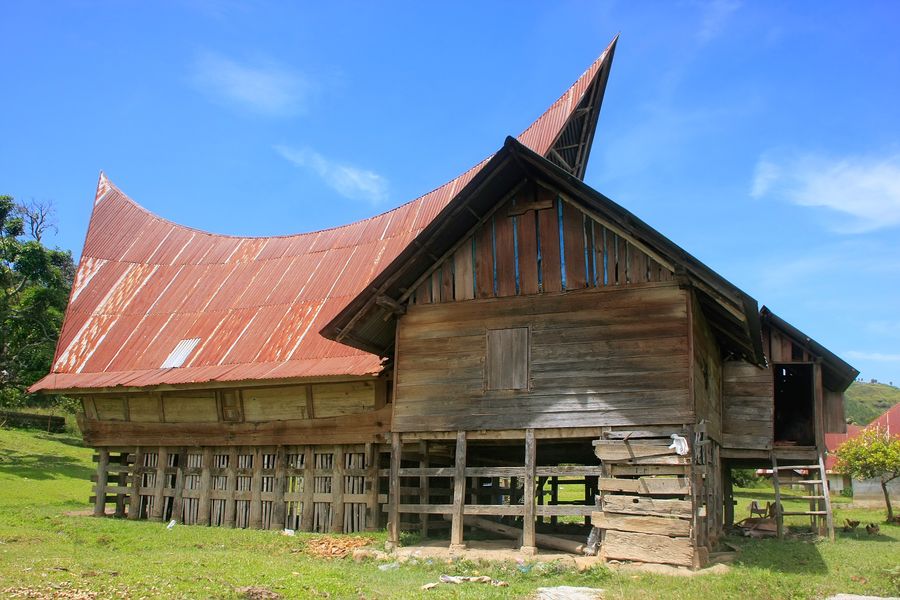Indonesia - ethnicity
Indonesia is located in Southeast Asia with 17,508 islands. Its fertile natural resources include oil, natural gas, coal, copper, Nickle, tin, silver and marine resources. Important agriculture economics are coffee beans, latex rubber, tobacco, palm oil, cocoa and corns. (เปรมใจ วังศิริไพศาล และคณะ ,บรรณาธิการ, 2556:39) There are five main islands of Indonesia, Java, Sumatra, Kalimantan, Sulawesi and Papua. The populations of 249.9 million (Data, 2016) live in 6,000 different islands that house over 1,000 ethnic groups (Jesudas M.Athyal,Editor, 2015:116) with 250 different languages. Most of the populations are Islamic.
According to information in 2000ม it shows that the Java people are the dominant ethnic groups making 95.217 million populations (Wikipedia, 2559). The Java can be categorized into 3 groups based on their belief and social status.
1. The noble class or Priyayi, formerly a group of royalties and high-ranking officials serving the court, is now identified as highly educated people, government officials and local governors. Most of them reside in urban areas where they appear respectful. Holding on a mixture of Java’s long history and Hindu, Buddhist and Islamic superstitious, the Priyayi favor Java arts and folk performances such as the masked plays, shadow plays and Java orchestra. (สีดา สอนศรี และคณะ, 2548:6-7)
2. The religious Islamic or Suntri identified as the religious Islamic Java people take up occupations of traders and property owners. They favor Arabic and Middle-East arts performances and music. (สีดา สอนศรี และคณะ, 2548:6-7)
3. The lower class or Abang Ngan live in rural areas and are relatively poor. They are laborers. They do not owning any farmlands or properties, but rather rent the farmlands or work as temporarily-hired laborers with limited access to education. (สีดา สอนศรี และคณะ, 2548:6-7)
The Sunda is the second largest group of people following the Java with 36.701 million populations. There are other ethnic groups as follows: the Batak 7.719 million, the Betawi 6.807 million, the Minangkabau 6.462 million, the Bugis 6.359 million, the Malay 5.365 million, the Banten 4.657 million, the Aceh 4.091 million, the Bali 3.946 million, the Dayak 3.099 million, the Chinese 2.832 million, the Papua 2.693 million and the Moluccas 2.203 million. (Wikepedia, 2559)
Indonesia consists of groups of large islands with diverse ethnicities. What has been the state’s fundamental principle of every ethnic group living together is ‘Bhinneka Tunggal Ika’ or Unity in Diversity. It, thus, has become a slogan appeared on National Emblem as a symbol enhancing the nation’s unity. The slogan was announced right after the Second World War. (ภูวดล ทรงประเสริฐ, 2539:2)
In terms of governance, the state has employed ‘Pancasila’ or the five pillars. The first one is the belief in the only one God (Monotheism). Second, the principle of Humanism in which any citizen is civilized and is never denied justice. Third, nationalism is a unity of Indonesia. (อรอนงค์ ทิพย์พิมล, 2555) Forth, the people proclaim popular sovereignty. And lastly, the social justice is established. (ลีเฟอร์ ไมเคิล, 2548:364) These principles had come into existence before Indonesia claimed independence from the Netherlands. These appeared in Sukarno speech against the commission of inquiry as Indonesia was preparing to proclaim it independence on 1st June 1945. It was set up regarding the supports of Japanese government. (ลีเฟอร์ ไมเคิล, 2548:364)
Under the much-advertising slogan and the governance principles, it is meant to achieve the harmony of different groups of people regarding their races, languages and religions. However, conflicts between groups constantly occur and bring about loss such as a conflict between the native and the Chinese and a demand for independence of the Aceh.
The conflict between the native and the Chinese
This issue arising from the conflict between two groups is a postcolonial consequence. As the Dutch ruled over the islands of Indonesia, they gave the Chinese a chance to improve their economic status while the native was segregated and deprived of rights. (ภูวดล ทรงประเสริฐ, 2540:92) Later, in the 1960’s-1970’s during which Sukarno was serving his presidency, it was the time when Southeast Asia was threatened by communism. The Chinese living in Indonesia were victimized and stigmatized as the fear of communism cost their lives and assets. The Chinese have been viewed as an absolute monopoly enjoying economic power over the native since the colonial time. This preconception insisted until after the Second World War. As a result, it led to the great Chinese uprooting costing an international relation between Indonesia and China.
During the colonial time, the economic cooperation between the Dutch and the Chinese had been consolidated before The Dutch East Indies: VOC was established in 1602. It was an investment made by the royal Dutch family and its private sectors. The Dutch marine along with the Chinese settling on the islands of Indonesia had succeeded at being wired for interests around the 14th century. The Hokkien community leaders secured a monopoly in port trades of both Java islands and other outer islands. It was not until the Dutch occupied Pattavia where the Chinese supplied them. Just when the Dutch succeeded at completely seizing the town, they turned to sabotage the Chinese monopoly games. As a result, the Chinese could not compete with the Dutch. (ภูวดล ทรงประเสริฐ, 2540:91)
While the economic developments in Java were left in the Chinese hands, the Dutch allowed them to plant many kinds of crops as well as free trades. By the mid-17 century, there had been 130 sugar factories owned by the Chinese whose laborers were Dutch-imported and Dutch-sold. However, the natives were never granted the rights to set up their own business. On the contrary, the Chinese were growing richer and wealthier becoming the middle men and the entrepreneurs. They settled down on the Islands of Indonesia and married the natives. Their mixed-blood descendants are known as Baba in Hokkien language or Peranakan in Indonesian language.
After the First World War, Indonesia saw a Chinese mass immigration in which most of them were Hakka, Guangdong, Teochew. The natives called them ‘Totok’ with a different recognition from the ‘Peranakan’ regarding ways of life and languages. Entering the 20th century, the nationalist ideology was drastically spreading among the Totok and the Peranakan resulting in founding Chinese language schools around the islands of Indonesia. Although the Japanese armies had succeeded at destroying the Dutch armies and seizing Indonesia in 1942, it did not much affect the Chinese language schools. The Totok played a vital role in improving teaching and learning Chinese while introducing the nationalist idea and communism. They were supported by Guomindang and the communist party of China.
When the Second World War was over, it was the momentous time for Indonesia whose independence was finally achieved. While the natives were fighting against the colonizers, the Dutch and the Japanese, for their independence, it was clear the Chinese trying to stay politically neutral showed no attempts to involve. Therefore, they could develop their economic potentials for wealth. This change was more explicit as taking over the Dutch-owned enterprises after independence declaration of Indonesia was common.
Indonesia under Sukarno’s rule was inevitably facing some colonial restrictions such as racial bias between the natives and the Chinese. Groups of Totok and Peranakan took control of agricultural goods that used to be Dutch-owned, while banking, oil, transportation business and post office became the state enterprises. However, it gave the Chinese a good chance for earning larger interests. Though the Indonesian government did entitle the natives to monopolize importing goods or a Benteng system, it was not successful. Political upheavals and economic fluctuations in Indonesia prevented it. However, some natives cooperated with the Chinese registering and importing the goods entitled to the native monopoly. Thus, the Chinese had another chance to make more profits out of this situation. This kind of cooperation is called ‘Ali-Baba’. Ali is the natives and Baba is the half-Chinese. (ภูวดล ทรงประเสริฐ, 2540:101)
In the late 1960’s, contextual societies within the country itself and in a global scale tremendously changed. On political and economic level, it was largely involved in scandalous corruptions. The elites were not trustworthy. Nonetheless, those being victimized were the Chinese owning many forms of business in the country. The fears of communism and economic depression put a heavy weight on the Chinese as irrational hatreds were incited around the cities and rural areas. Business owned by the Chinese was destroyed especially in the rural areas, so it forced them to sell out their business and leave the assets there before moving into the cities. But it was never an answer. Though the Chinese government protested the Indonesian government so many times, it finally sent ships to take the Chinese back to their mother land and officially cut diplomatic ties with Indonesia in 1967. (ภูวดล ทรงประเสริฐ, 2540:107)
In the late 1960’s, Sukarno was diminished and losing his political momentum with the military intervention led by General Suharto. It was political upheavals and economic challenges for Indonesia at that time when violent riots putting down communism aimed at killing the Chinese. This situation was exploited as a political tool that legitimized political power of General Suharto who became the president in 1967. (ภูวดล ทรงประเสริฐ, 2540:107)
Entering the new era of Suharto, the Chinese businessmen were trying to reconnect with political leaders to create their wealth ever again, especially with the Suharto family and key army officers. The Chinese exploited the connections to intervene and monopolize some kinds of business for the state agencies, and, in no time, they became economically prominent having chances to work with the government to solve social problems for the Indonesian-Chinese. They took part in office of executive committees for Chinese affairs as well as office of executive directors of Chinese connections in cooperation with key army officers and high-ranking officials. They finally succeeded at solving problems of racial and nationality status of the Chinese by issuing a decree diminishing a treaty of dual nationality as of 1955. It allowed the Chinese to obtain the Indonesian nationality with every right they deserved. Moreover, the government assimilated them into adopting Indonesian names, yet practicing Chinese rituals in public was prohibited. The Chinese role in Indonesian economics was increasingly crucial during the time of Suharto’s rule. It was not until 1990 when the two nations decided to restore the diplomatic relations. (ภูวดล ทรงประเสริฐ, 2540:107)
In 1998, a massive riot against President Suharto’s political power sparked off and cost the Chinese their lives and assets. It was due to economic-status differences with reports of 1,000 Chinese being killed. Finally, President Suharto decided to step down on 21 May 1998. The riot calmed down marking 32 years long of his political power.
In conclusion, the Chinese in Indonesia from the colonial periods to the independence declaration have been playing a prominent role in Indonesian economics. It cannot help but causes an inequality between the natives and the Chinese costing them to pay the price. The Chinese were subjects to violence regarding political and economic changes in the country. Though the government now allows Chinese practices in public or Chinese names, what has been their great expectation from political leaders, especially the president election in 2014, is peace and justice to the minority making up 10 million populations of this country. (Christine Franciska, 2557)
A demand for independence of the Aceh
Aceh is a province of Indonesia located in the Northeast of Sumatra with their own language in Romanized written form. It houses various ethnic groups such as Aceh, Gayo, Anouk, Jame, Tamiang and Klut. The Aceh group is very religiously Islamic. Islam had come into existence in Aceh in 8th century before spreading to Indonesia. Thus, Aceh is a door to Mecca. (วิทยา สุจริตธนารักษ์ และ สุภาค์พรรณ ขันชัย, 2546:3-4)
The fights of the Aceh have been known since the 14th century when they were fighting against the Portuguese claiming their sovereignty over Malacca in 1586. Another historic fight was to protect their homeland from the Dutch trying to establish their colony there in 1873. It was said that “Aceh is so strong and flourishing that the Netherlands do not wish to see it as an independent state anymore.” (เต็งกู ฮาซัน เอม ดิติโร่, 2543:42) The Sultan and the people of Aceh were relentlessly fighting against the Dutch, never surrendered, never backed down and never signed a peace treaty. Finally, they won. However, it was just buying time when in 1903 the Sultan surrendered to the Dutch. The fight continued until 1942 when it was the last fight banishing the Dutch out of Aceh land. (สุพรรณี กาญจนัษฐิติ, 2543) It has taken almost a century for the Aceh to put up fights against the western colonizers in hopes to maintain the independence.
When the colonial period was over, Aceh was handed over to Java care. After Indonesia proclaimed its independence and became Republic of Indonesia, Aceh was still a sovereign state with its own rights supporting Indonesia. (วิทยา สุจริตธนารักษ์ และ สุภาค์พรรณ ขันชัย, 2546:55)
On 1st January 1950, Aceh became one of the Indonesian provinces. However, due to political upheavals, in later year it was not a province anymore but was part of northern Sumatra Island. The federal government decided to redefine Aceh’s military role and political power by reassigning high-ranking army officers and downsizing its battalions to troops. Aceh was losing its momentum to rule over itself and started feeling resented towards the federal government whose job was sending the outsiders to rule Aceh. (วิทยา สุจริตธนารักษ์ และ สุภาค์พรรณ ขันชัย, 2546:60)
A fight for its independence was made clear on 21st September 1953 in the name of a group of Darul Islam who announced the establishment of Islamic State of Indonesia. It was led by Daud Beureu’eh, a prominent religious leader in Aceh. Though Sukarno came to terms that Aceh was an autonomous state regarding their religion, education and culture, this kind of gesture never satisfied the Aceh. On the contrary, the Aceh never trusted the government’s sincerity in solving the problems. (เมธัส อนุวัตรอุดม, 2555:12)
In 1971, Aceh was the center of interests attracting the federal government and Javanese businessmen. Since oil and natural gas was discovered, it was no doubt contributing great interests to those two groups but the least amount for the Aceh. (เมธัส อนุวัตรอุดม, 2555:12) Living in a very unfair condition and being taken advantages from the outsiders led to its independence declaration on 4th December 1976. Aceh Sumatra National Liberation Front declared the independence signed by Dr. Teungku Hasan Muhammad di Tiro. He was a descendant of a famous Islam-teaching teacher in Aceh and a former Sultan of Aceh. The declaration raised the Aceh’s awareness that Aceh was a nation with a long history and was ready to fight back anytime to preserve its sovereignty. (เต็งกู ฮาซัน เอม ดิติโร่, 2543:53)
Under Suharto’s rule, Aceh and the government confronted because of the establishment of Gerakan Aceh Merdeka – GAM or Free Acehnese Movement (1976-1989). It was ‘Aceh Sumatra National Liberation Front’ in 1976. While the federal government was controlling military power, Aceh was announced ‘military operation area’ in 1989. Human rights were deliberately violated as torturing, abducting, killing and rapes were common. It was reported 1,000-3,000 people were killed while 900-1,400 people were missing. These great losses influenced the Acehnese to turn and support the GAM. More of them joined the movement making it even stronger. Later, in the efforts of President B.J Habibie office, military forces were diminished. Apologies were issued for the Acehnese but violent situations constantly occurred. Negotiations never worked.
Abdulrahman Wahid’s presidency improved the situation in which Wahid made a political gesture supporting a referendum in Aceh. “As Timorese conducted a referendum, so does Aceh”, he said. Moreover, Aceh accepted the offer made by the federal government stating Aceh had privileges. (วิทยา สุจริตธนารักษ์ และ สุภาค์พรรณ ขันชัย, 2546:119-120) The efforts of the government and GAM eventually led to Cessation of Hostilities Agreement – CoHA on 9th December 2002 at Geneva. However, it lasted only 5 months. Entering Megawati Soekarnoputri’s era, martial law was imposed. The military force attacked the GAM so terribly Aceh had never seen before. Unlawful arrests, missing people and abducting, and killing were brought back again. But eventually both side agreed to negotiate and signed the Memorandum of Understanding – MOU at Helsinki, Finland on 15th August 2005. It led to military withdrawal with GAM giving in on the demand for its independence and sovereign state. It marked the end of the long-battling conflict that took 30 years in Aceh. (อรอนงค์ ทิพย์พิมล, 2553:270) Now Aceh is an autonomous state with special administration.
After signing the MOU, the GAM is continuing its movement. They founded their first political party, Partia Aceh or PA, as contesting in the general election on 9th April 2009. It was hugely supported by 99.99% of people with a strong belief PA is having the independent Aceh ideology. (อรอนงค์ ทิพย์พิมล, 2553:270) Though the Aceh’s demand for independence was ended, the ideology of sovereign state lives on. There has been no violence employed in demanding for independence so far.
Indonesia is a home to varied ethnic groups. Its topography is groups of islands making it difficult for the government to reach out to its people. Apart from racial conflicts, there has been religious conflicts occurring such as conflicts between the Christians and Islamic in Moluccas, Aceh and Papua. The violent situations regarding racial or religious conflicts occurring each time did reflect understanding and the government’s potentials for solution. Though its colonial slogan has announced ‘unity in diversity’, conflicts regarding diversity never go away. The great expectation to find a solution is placed upon the present president ‘Joko Widodo’ who made a promise before his presidency that he would investigate the tragedy in May 1988 and that he would fight for the minority rights.
Bibliography
ภูวดล ทรงประเสริฐ. (2539). อินโดนีเซีย : อดีตและปัจจุบัน. กรุงเทพมหานคร: สำนักพิมพ์จุฬาลงกรณ์มหาวิทยาลัย.
ภูวดล ทรงประเสริฐ. (2540). ชาวจีนในอินโดนีเซีย. สังคมศาสตร์ปริทัศน์, 87-114.
เมธัส อนุวัตรอุดม. (2555). กระบวนการสันติภาพอาเจะห์ สาธารณรัฐอินโดนีเซีย. กรุงเทพมหานคร: บริษัท ธรรมดาเพรส จำกัด.
วิทยา สุจริตธนารักษ์. (2548). ผู้นำอินโดนีเซีย. ใน สีดา สอนศรี และคณะ, ผู้นำในเอเชียตะวันออกเฉียงใต้:ศึกษาเฉพาะประเทศอินโดนีเซีย ฟิลิปปินส์ สิงคโปร์ มาเลเซีย และไทย (หน้า 1-76). กรุงเทพมหานคร: โรงพิมพ์แห่งจุฬาลงกรณ์มหาวิทยาลัย.
ลีเฟอร์ ไมเคิล. (2548). พจนานุกรมการเมืองสมัยใหม่ในเอเชียตะวันออกเฉียงใต้. กรุงเทพมหานคร: สำนักพิมพ์มหาวิทยาลัยธรรมศาสตร์.
วิทยา สุจริตธนารักษ์ และ สุภาค์พรรณ ขันชัย. (2546). อดีตและอนาคตของอะเจห์. กรุงเทพมหานคร: บริษัท กรีน พริ้นท จำกัด.
เปรมใจ วังศิริไพศาล และคณะ ,บรรณาธิการ. (2556). กระแสเอเชีย 2012/2555. กรุงเทพมหานคร: สถาบันเอเชียศึกษา จุฬาลงกรณ์มหสวิทยาลัย.
อรอนงค์ ทิพย์พิมล. (2553). อาเจะห์วันนี้ : สี่ปีหลังข้อตกลงสันติภาพ ความหวาดระแวงระหว่างผู้คนในสังคมยังคงอยู่. ใน สุเจน กรรพฤทธิ์ และ สิทธา เลิศไพบูลย์ศิริ, อุษาคเนย์ที่รัก (หน้า 267-275). กรุงเทพมหานคร.
เต็งกู ฮาซัน เอม ดิติโร่. (2543). รัฐอาเจะห์แห่งสุมาตรากับลัทธิอาณานิคม. ศิลปวัฒนธรรม, 38-53.
สุพรรณี กาญจนัษฐิติ. (2543). Aceh (ประวัติย่อของอาเจะห์). ศิลปวัฒนธรรม, 38-53.
Jesudas M.Athyal,Editor. (2015). Religion in Southeast Asia. California.
Christine Franciska. (02 กรกฎาคม 2557). New voting power of Chinese Indonesians. เรียกใช้เมื่อ 21 มีนาคม 2559 จาก BBC: http://www.bbc.com/news/world-asia-27991754
Data. (2016). เรียกใช้เมื่อ 09 กุมภาพันธ์ 2016 จาก The Worldbank: http://data.worldbank.org/indicator/SP.POP.TOTL
http://mono29.mthai.com. (13 พฤศจิกายน 2558). ความขัดแย้งทางศาสนาในอินโดนีเซีย. เรียกใช้เมื่อ 23 มีนาคม 2559 จาก mono29: https://goo.gl/5uWCUj
Wikepedia. (2559). Ethnic group in Indonesia. เรียกใช้เมื่อ 03 มีนาคม 2559 จาก Wikepedia: https://en.wikipedia.org/wiki/Ethnic_groups_in_Indonesia
อรอนงค์ ทิพย์พิมล. (2555). เอกภาพท่ามกลางความหลากหลาย. เรียกใช้เมื่อ 02 มีนาคม 2559 จาก ประชาไท บล็อกกาซีน: http://blogazine.pub/blogs/onanong/post/3658





